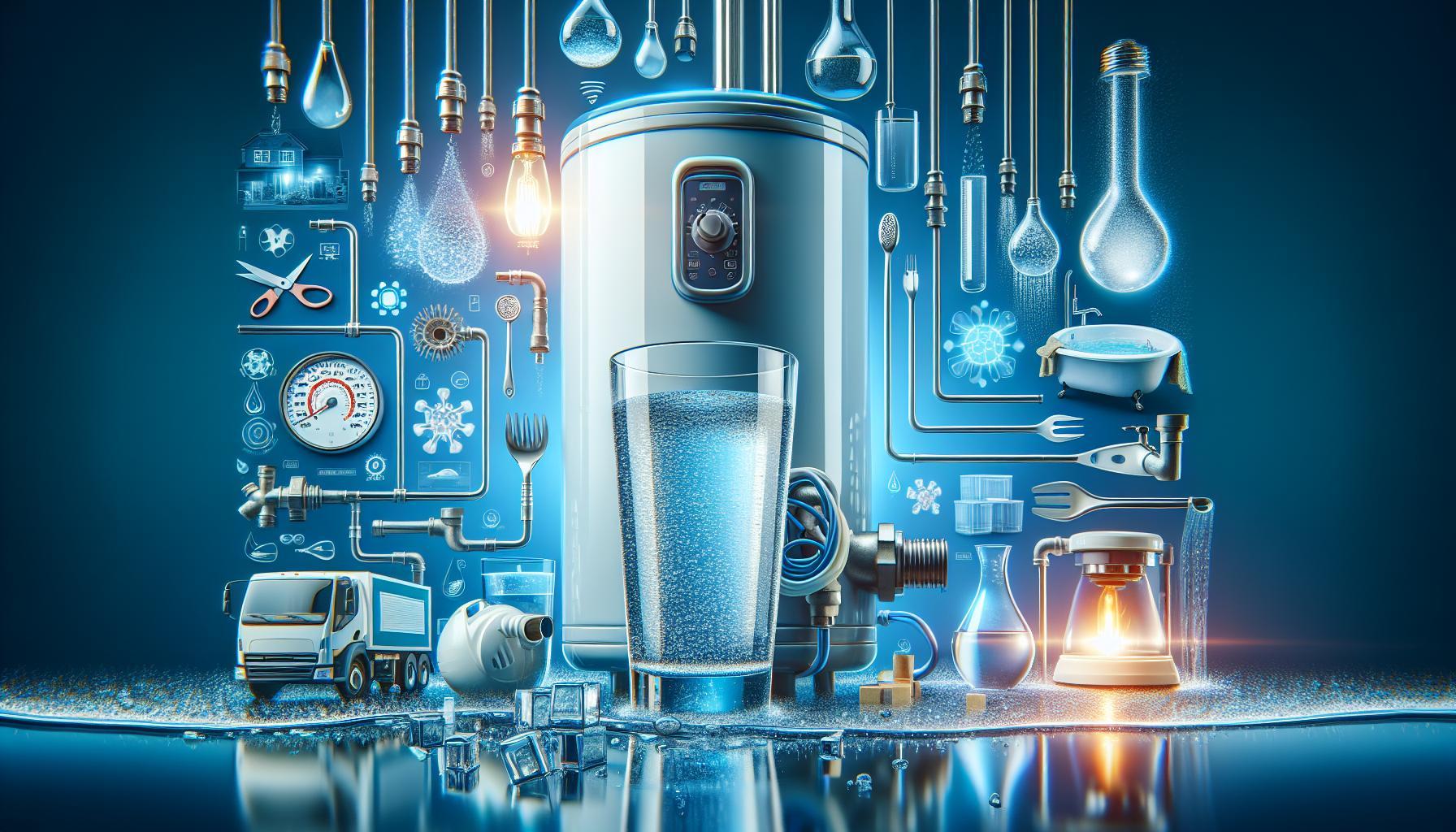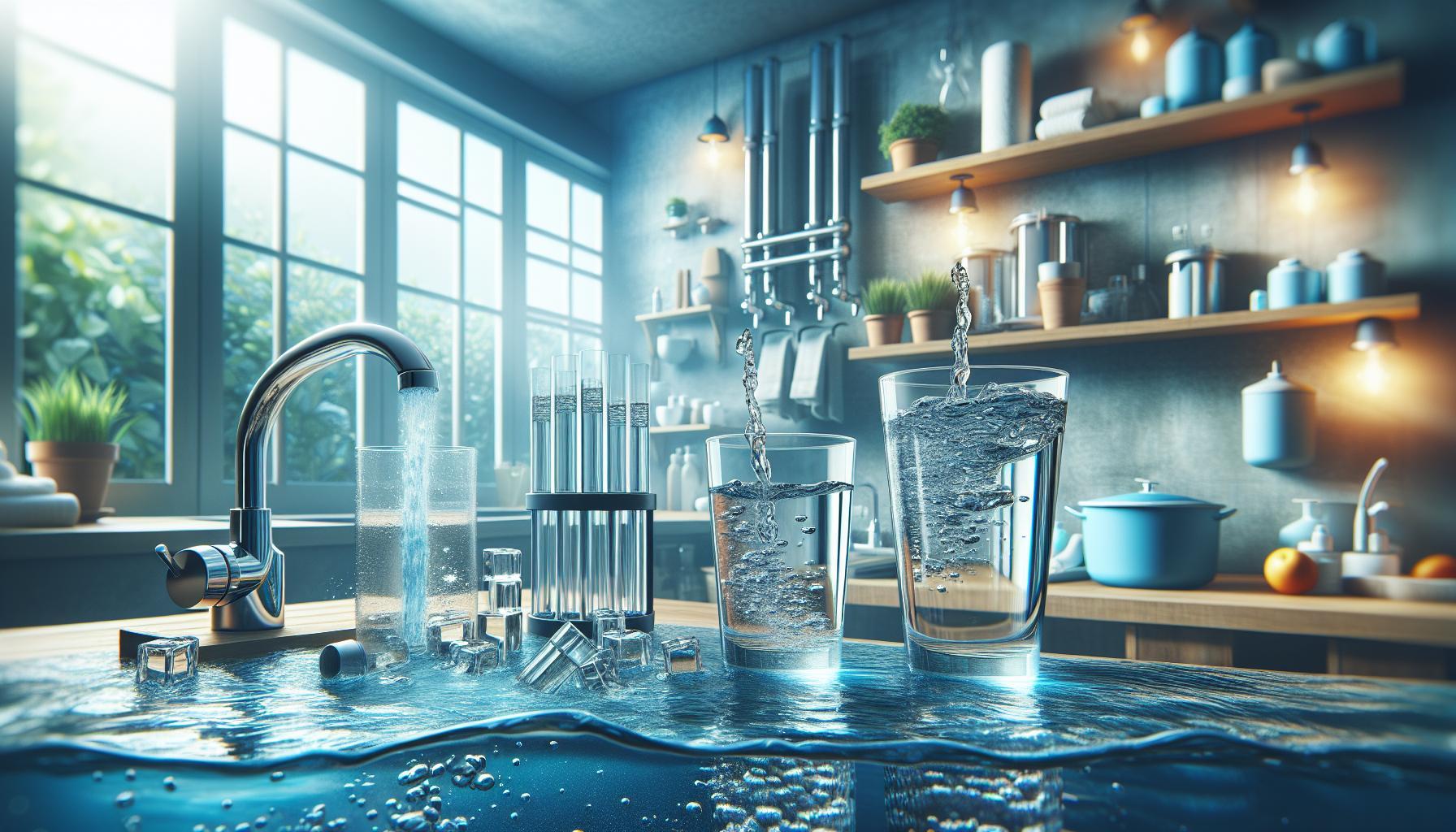Are you unsure whether your electric water heater needs a vent? Understanding the safety essentials surrounding your water heating system is crucial for maintaining a safe home environment. Unlike gas-powered heaters, electric models generally do not require venting, but knowing the ins and outs of your setup can prevent potential hazards and ensure optimal performance.
Understanding the Basics of Electric Water Heaters
Electric water heaters are a popular choice in many homes, primarily due to their efficiency and ease of use. Unlike gas water heaters, electric models do not require ventilation systems to expel combustion gases, making installation more straightforward and often less costly. This absence of venting means that they can be installed in a variety of locations, including basements, closets, or utility rooms, which offers flexibility in home design and layout. Understanding how these devices operate is crucial for both safety and efficiency.
How Electric Water Heaters Work
Electric water heaters utilize electrical resistance to generate heat, which is then transferred to the water within the tank. Key components of these systems include:
- Heating Elements: Typically, two elements are present, one for the upper portion of the tank and another for the lower. These elements are powered by electricity and are a common point of failure, making their replacement straightforward and affordable.
- Thermostat: This device monitors the water temperature and activates the heating elements when necessary to maintain a set temperature.
- Tank Insulation: Good insulation helps to keep heat in, improving energy efficiency and reducing the need for constant reheating.
Investing in maintenance, such as regularly testing the heating elements and checking the thermostat settings, can prolong the life of your electric water heater and ensure that it operates effectively.
Safety Concerns and Installation Tips
While the question of “Does an Electric Water Heater Need a Vent? Safety Essentials Explained” is fundamental, knowing the general safety precautions for electric water heaters is just as essential. Here are essential safety tips:
- Proper Installation: Ensure that the unit is installed according to the manufacturer’s recommendations and local building codes.
- Regular Maintenance: Flushing the tank annually can prevent sediment buildup, which improves heating efficiency and lowers the risk of overheating.
- Electrical Checks: Regularly check the wiring and connections to avoid electrical hazards.
By following these guidelines, homeowners can maintain a safe and effective electric water heating system, ensuring reliable hot water while minimizing risks and maximizing efficiency.
Why Ventilation Matters for Water Heaters
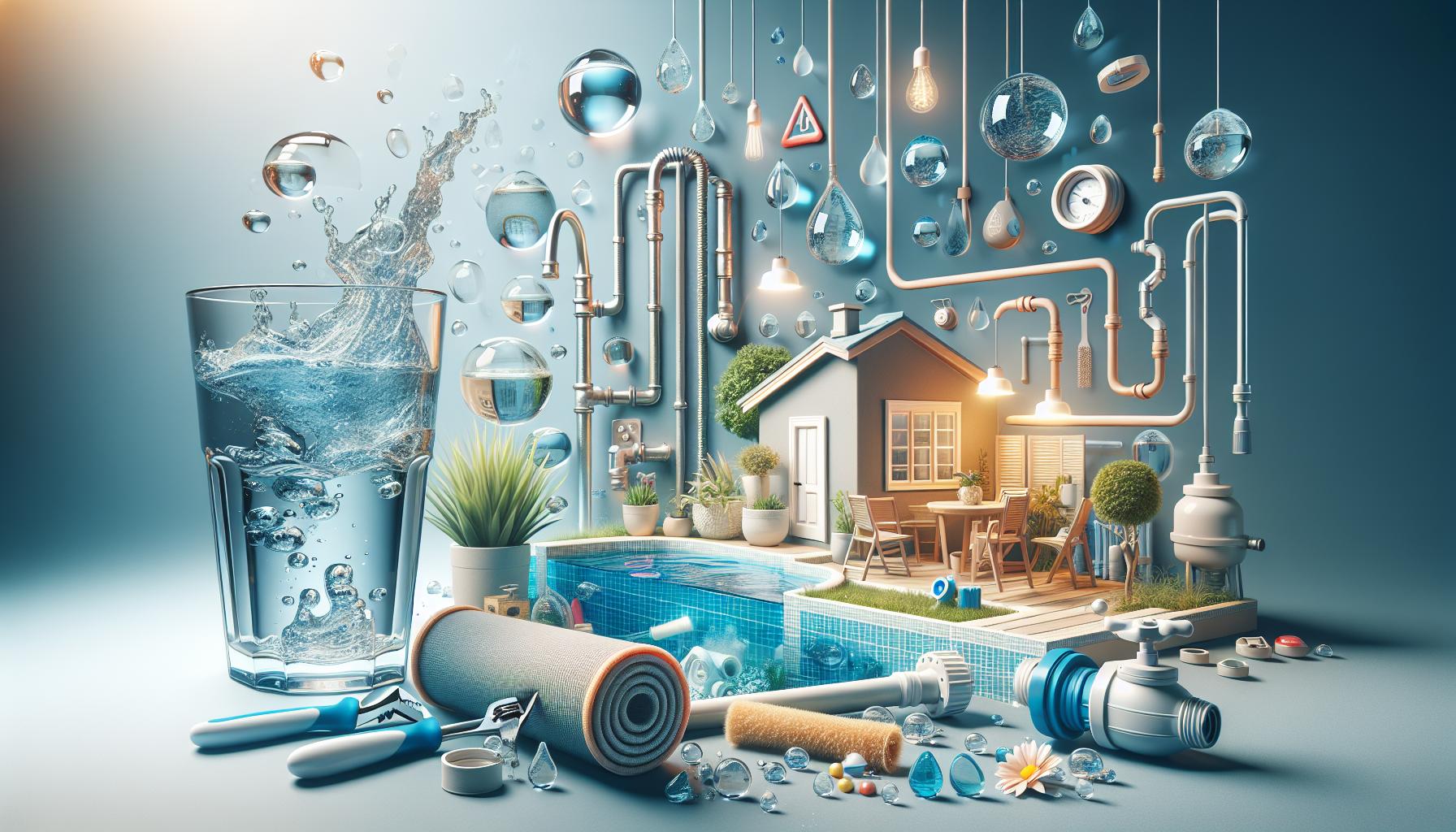
When it comes to home safety, one often overlooked aspect is the ventilation of water heaters, especially electric models. While many homeowners instinctively think of the dangers associated with gas appliances and their need for proper venting, electric water heaters present their own unique safety concerns. Understanding the importance of adequate ventilation can help prevent potential hazards and improve the efficiency of your water heating system.
Understanding the Role of Ventilation
Ventilation serves several crucial functions for any water heater, and while electric water heaters do not expel combustion gases like their gas counterparts, proper airflow remains essential:
- Temperature Control: Maintaining optimal air circulation helps regulate the temperature around the water heater, preventing overheating. Over time, excess heat can damage the unit or surrounding materials.
- Mold and Mildew Prevention: In areas where moisture accumulates, adequate ventilation can significantly reduce the risk of mold and mildew, which can impact air quality and cause health issues.
- Efficiency Boost: Proper airflow allows the unit to operate more efficiently, as excessive heat buildup can cause your electric heater to work harder, consuming more energy.
Safety Considerations
While electric water heaters eliminate the risk of flammable gas leaks that necessitate ventilation, they can still pose fire hazards if not properly maintained. Key safety considerations include:
- Clearance from Flammable Materials: Ensure that your water heater is positioned away from combustible materials, such as cardboard boxes and clothing. Maintain a safe space around the unit to facilitate airflow.
- Regular Inspections: Periodic checks for signs of wear, damage, or corrosion in the unit and its surroundings can help catch potential hazards early. Look for any signs of water pooling or leaks.
- Professional Maintenance: Schedule routine professional inspections to ensure that the ventilation system is functioning correctly and to identify any potential issues before they escalate into safety risks.
By understanding the nuances behind the ventilation needs of water heaters, homeowners can protect their property and ensure that their systems operate at peak efficiency. While it may not seem as urgent as venting a gas heater, prioritizing proper ventilation for electric models can lead to a safer and more reliable water heating experience.
Do Electric Water Heaters Require Venting? Myths vs. Facts
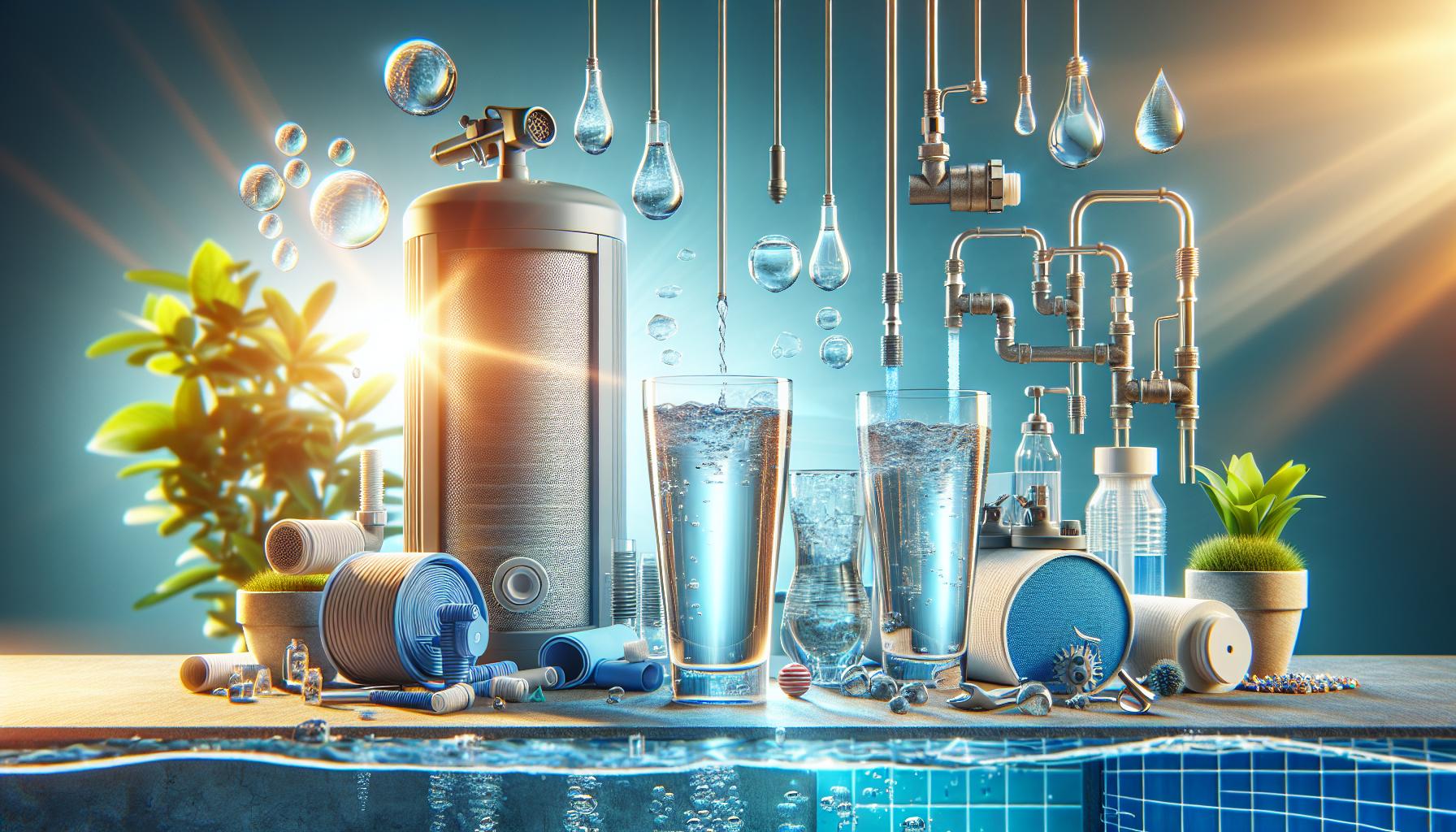
While many homeowners may be concerned about potential risks associated with water heating systems, understanding the requirements of electric water heaters can demystify common misconceptions. One prevalent myth is that all water heaters, regardless of fuel type, require venting for safety. In reality, electric water heaters operate differently than gas models, leading to important distinctions in their installation and safety protocols.
Myth: Electric Water Heaters Require Venting
One of the most significant myths surrounding electric water heaters is that they must be vented to the outside. This misconception likely stems from the fact that gas water heaters produce combustion gases that must be expelled to prevent dangerous buildup inside the home. However, electric water heaters use electricity as their power source and produce no combustion gases, which means they do not require a venting system. This characteristic not only simplifies installation but also enhances safety within enclosed spaces, as there is no risk of harmful gases being trapped indoors.
Fact: Safety Measures Still Apply
Although electric water heaters do not require venting, it’s essential for homeowners to be aware of safety essentials. Proper installation and maintenance remain critical to ensure safe operation. Some safety tips include:
- Location: Install the unit in a space that is adequately ventilated, even if venting is not required.
- Regular Maintenance: Schedule annual inspections to verify that all electrical components are functioning correctly.
- Temperature Setting: Set your water heater’s thermostat to 120°F (49°C) to prevent scalding and reduce energy costs.
While venting is not necessary for electric water heaters, understanding their operational requirements is crucial for safe and efficient performance. By debunking myths and focusing on the facts, homeowners can manage their electric water heaters effectively, ensuring both comfort and safety in their homes.
Safety Features of Electric Water Heaters You Should Know
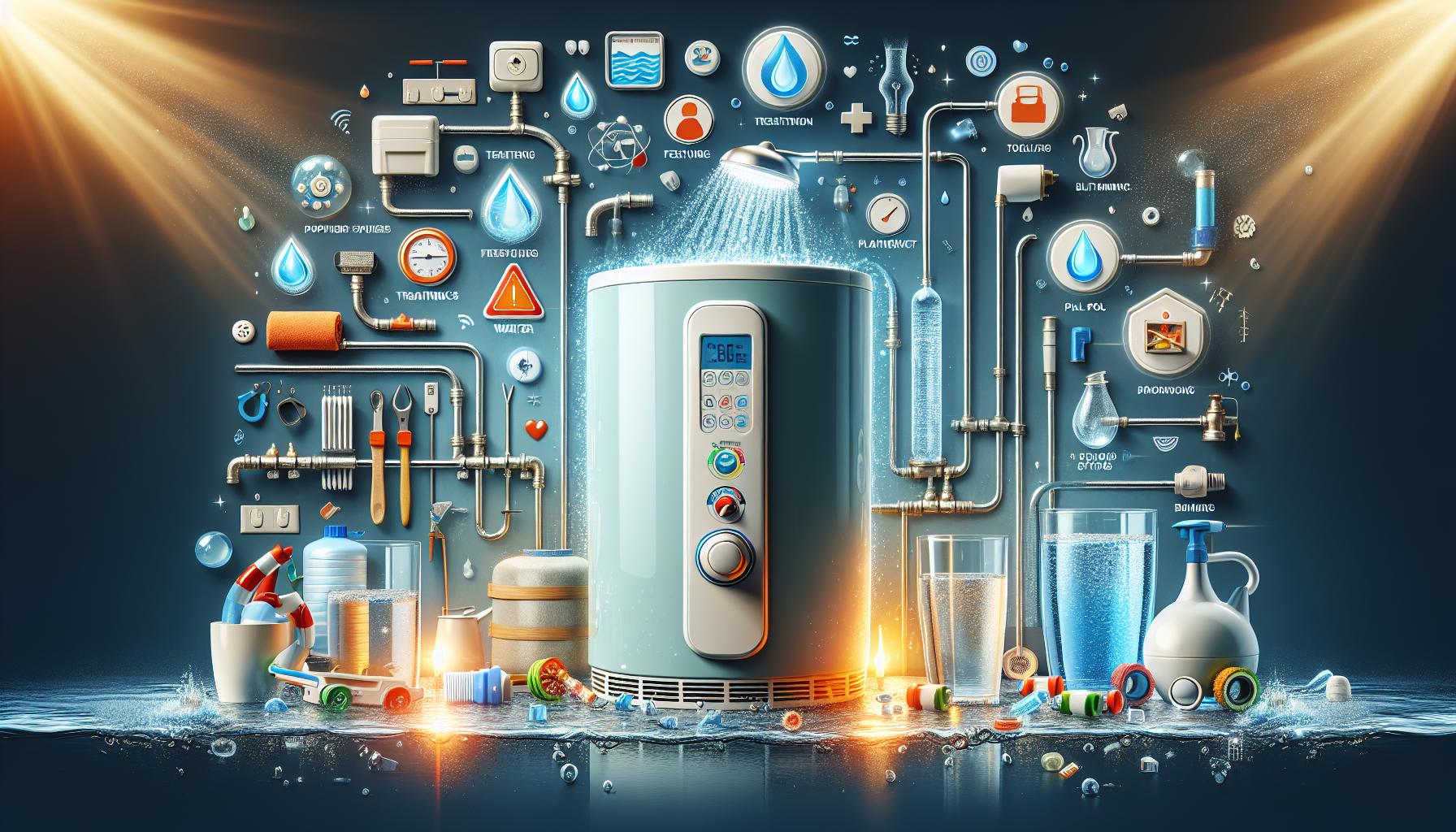
Electric water heaters have become a staple in modern homes for their efficiency and reliability. However, understanding the safety features of these appliances is crucial in ensuring they operate safely and effectively. Unlike traditional gas water heaters, electric models do not require venting, which simplifies installation but introduces different safety considerations that homeowners should be aware of.
One primary safety feature of electric water heaters is the thermostat. This device regulates the temperature of the water, ensuring it doesn’t exceed safe levels, which can prevent scalding. It is vital to set the temperature to a safe level, typically around 120°F (49°C), to reduce the risk of burns. Alongside the thermostat, dual heating elements enhance safety by allowing the water to be heated from both the top and the bottom, ensuring that hot water is available even if one element fails.
Another important component is the high-temperature limit switch. This safety device automatically shuts off the heater if the water temperature exceeds the preset limit, preventing potential damage or hazards. Regularly testing this feature ensures that it operates correctly; many models also have a manual reset function, which can be useful in emergencies.
For electrical safety, ground-fault circuit interrupter (GFCI) protection is essential in areas prone to moisture, such as laundry rooms or basements. This device cuts off the electric supply if it detects a fault, significantly reducing the risk of electrical shock. Homeowners should ensure that their water heater is on a GFCI circuit for enhanced safety.
Leveraging these safety features can significantly increase the protection provided by electric water heaters. Regular maintenance and checks, including testing the thermostat and limit switches, can prevent issues before they arise, ensuring that your hot water supply remains both safe and efficient. By being informed about the necessary safety essentials of electric water heaters, homeowners can enjoy peace of mind while reaping the benefits of their modern appliances.
Proper Installation Practices for Electric Water Heaters
Installing an electric water heater may seem straightforward, but ensuring it functions efficiently and safely requires meticulous attention to proper practices. Many homeowners overlook the critical aspects of installation, leading to potential hazards and inefficiencies. Unlike gas water heaters, electric units do not require venting; however, a thorough understanding of installation protocols is essential to maximize performance and longevity.
Preparation Before Installation
Before diving into the installation process, it’s crucial to assess the space where the electric water heater will be placed. Ideally, the area should be dry, well-ventilated, and easily accessible for future maintenance. Here are some key considerations:
- Electrical Capacity: Ensure that the existing electrical panel can handle the additional load required for the electric water heater. Consulting with a licensed electrician can help verify this.
- Location: Choose a spot close to usage points, such as bathrooms and kitchens, to minimize heat loss in the pipes and maximize efficiency.
- Code Compliance: Be aware of local building codes and regulations that pertain to water heater installations to avoid fines and ensure safety.
Installation Steps
Once the pre-installation preparations are complete, follow these steps for a successful installation:
- Shut Off Power and Water Supply: Always begin by turning off the power at the breaker box and shutting off the water supply.
- Mount the Unit: Securely mount the electric water heater according to the manufacturer’s guidelines, ensuring it is level to prevent possible leaks.
- Connect Plumbing: Attach the cold water supply line to the inlet and the hot water line to the outlet. Using Teflon tape on threaded connections can help prevent leaks.
- Wiring: Connect the electrical wires according to the color codes and specifications in the installation manual. Ensure all wires are properly secured and insulated.
- Test the System: After completing the installation, restore power and fill the tank with water. Check for leaks and ensure the unit heats water effectively.
Maintenance Considerations
Proper installation is only the beginning; ongoing maintenance is crucial for an electric water heater’s safety and efficiency. Regularly inspect the unit for leaks, sediment buildup, and any electrical issues. Flushing the tank annually helps remove sediment that can affect heating efficiency and serves as a preventative measure against corrosion.
Emphasizing these proper installation practices not only answers the question of whether an electric water heater needs a vent but also highlights the importance of stringent safety measures and routines in ensuring long-term functionality. Keep these tips in mind, and your electric water heater will provide reliable service for years to come.
Signs Your Electric Water Heater May Need Attention
Unbeknownst to many homeowners, the electric water heater is a crucial component of everyday convenience, providing hot water for showers, washing dishes, and laundry. However, just like any other appliance, it can show signs of wear and tear that necessitate immediate attention to avoid further issues. Regularly monitoring the performance of your electric water heater can save you money and prevent water damage within your home.
Common Indicators of Trouble
When examining your electric water heater, keep an eye out for the following signs that may indicate it requires professional inspection or repair:
- Inconsistent Water Temperature: If you’re experiencing fluctuating water temperatures, it could signal a malfunctioning heating element or thermostat.
- Unusual Noises: Sounds such as popping, rumbling, or hissing may suggest sediment buildup in the tank, which can lead to overheating.
- Leaks or Moisture: Puddles around the base of your water heater or moist spots on the floor indicate a leak, which could be a serious problem.
- Rusty or Discolored Water: If your hot water looks rusty or has a metallic taste, it could point towards corrosion inside the tank.
- Higher Energy Bills: A sudden spike in energy costs may suggest your water heater is working harder than it should and might need servicing.
What to Do Next
If you notice any of these symptoms with your electric water heater, it’s essential to take action quickly. Scheduling a professional inspection can help diagnose the problem accurately. In some cases, simple maintenance tasks, such as flushing the tank to remove sediment, can significantly extend the lifespan of your unit.
For those wondering about the importance of ventilation in electric water heaters, rest assured that they generally do not require venting, as they do not produce harmful gases like gas models. However, understanding whether an electric water heater needs a vent will guide you in making informed choices about safety and efficiency, ensuring your system operates smoothly.
By remaining vigilant and proactive regarding the signs that your electric water heater may need attention, you can ensure its efficient operation and protect your home from potential issues. Regular maintenance is not just advisable; it is fundamental to preserving the functionality and longevity of this essential appliance.
Maintaining an Efficient and Safe Electric Water Heater
Electric water heaters offer a convenient way to provide hot water without the complexities of venting systems required by gas-powered units. However, maintaining these devices effectively is crucial not only for efficiency but also for safety. Regular upkeep ensures that your electric water heater operates at optimal levels while reducing the risk of unforeseen issues that could lead to costly repairs or safety hazards.
Regular Maintenance Checks
To keep your electric water heater running smoothly, routine maintenance checks are essential. Incorporate the following practices into your schedule:
- Inspect the Pressure Relief Valve: Regularly test the temperature and pressure relief valve by manually lifting the lever. This can help identify any blockages or failures that could lead to excessive pressure build-up.
- Flush the Tank: Sediment and mineral build-up can significantly affect the performance and longevity of your water heater. Flushing the tank at least once a year can help maintain heating efficiency and prevent corrosion.
- Check Anode Rod: Examine the anode rod every two to three years. This component helps prevent tank rust. If it’s significantly corroded, it should be replaced to extend the life of your water heater.
Monitoring Temperature Settings
The temperature setting on your electric water heater plays a crucial role in efficiency and safety. Keeping the temperature at 120°F (49°C) is often recommended, as it helps prevent scalding and reduces energy consumption. Here are some tips for managing temperature effectively:
- Use the Thermostat: Review the manufacturer’s instructions for adjusting the thermostat. Ensuring it’s set correctly will help maintain safe water temperatures.
- Monitor with a Thermometer: Occasionally, check the outlet temperature using a thermometer. This practice ensures that the heater is functioning within the safe range.
Be Aware of Signs of Trouble
Familiarizing yourself with the signs that your electric water heater may need attention can prevent more significant issues down the line. Watch for these indicators:
| Signs of Trouble | Possible Issues |
|---|---|
| Unusual Noises | Mineral build-up or heating element issues |
| Rusty Water | Corrosion in the tank or pipes |
| Leaking Water | Seal or tank damage |
| Inconsistent Temperature | Electrical or heating element malfunction |
Addressing these signs promptly can help maintain safety and efficiency in your system. By following these tips, homeowners can enjoy reliable, safe hot water while ensuring their electric water heater operates effectively without the complexities associated with venting systems, as discussed in “Does an Electric Water Heater Need a Vent? Safety Essentials Explained.”
Expert Tips for Troubleshooting Common Electric Water Heater Issues
Electric water heaters are generally known for their convenience and efficiency, but like any appliance, they can encounter issues from time to time. Understanding how to troubleshoot these problems can save you time, money, and ensure that you maintain a safe home environment. Here are some expert tips tailored to common electric water heater issues.
Identify Common Issues
Understanding the typical problems that may arise with electric water heaters is the first step in troubleshooting. Here are some signs to watch for:
- No hot water: This could indicate a faulty thermostat, a tripped circuit breaker, or a burned-out heating element.
- Insufficient hot water: This may suggest that the unit is undersized for your needs, or it could also point to sediment buildup in the tank affecting efficiency.
- Strange noises: Sounds like popping or rumbling can signify sediment buildup, which can be resolved through regular flushing of the tank.
- Water discoloration or odor: Discolored water might indicate rust in the tank, while foul odors can be a sign of bacteria. In both cases, you may need to flush the tank or replace the anode rod.
Step-by-Step Troubleshooting Guide
If you encounter any of the above issues, follow this troubleshooting guide for resolution:
| Issue | Possible Cause | Solution |
|---|---|---|
| No hot water | Tripped circuit breaker | Check and reset the breaker. If it trips again, consult a technician. |
| Insufficient hot water | Sediment buildup | Perform a tank flush to remove sediment and improve efficiency. |
| Strange noises | Mineral buildup | Flush the tank regularly to prevent buildup and noise. |
| Water discoloration | Rust | Inspect the anode rod and replace it if significantly corroded. |
Regular Maintenance is Key
Prevent repetitive issues by incorporating regular maintenance into your schedule. Set reminders to check the temperature settings and ensure they are around 120°F, which is generally safe and efficient. Flushing the tank at least once a year can also help maintain optimal performance and prolong the life of your electric water heater. Remember, addressing even minor issues promptly will not only enhance safety but also prevent costly repairs down the line.
By familiarizing yourself with these troubleshooting steps and maintenance tips, you can swiftly address common electric water heater problems while ensuring your home remains comfortable and safe.
Frequently Asked Questions
Does an Electric Water Heater Need a Vent?
No, electric water heaters do not need a vent. Unlike gas units, electric water heaters operate without combustion, meaning they do not produce harmful gases that require ventilation.
This absence of venting is one reason many homeowners prefer electric models. Electric water heaters are typically more straightforward to install as they can be placed in a variety of locations, including tight spaces. Since they do not rely on fossil fuels, they also pose a lower risk of gas leaks, making them a safer choice for many.
Why Does an Electric Water Heater Not Need a Vent?
An electric water heater does not necessitate a vent because it runs on electricity. Hence, it doesn’t produce exhaust gases that require expulsion from a home.
On the contrary, gas heaters burn fuel, generating byproducts like carbon monoxide that can be dangerous if not properly vented. By not needing a vent, electric heaters simplify installation and reduce potential hazards associated with venting systems. For more details, check our article on electric water heater safety.
Can I Install an Electric Water Heater Without Venting?
Yes, you can install an electric water heater without any venting. This is one of the advantages of electric models.
Electrical units offer flexibility in placement since they do not require exhaust outlets or complex ventilation systems. This ease of installation can save time and money, allowing for installation in basements, attics, or closets without worrying about vent access.
What Are the Safety Essentials for Electric Water Heaters?
Safety essentials for electric water heaters include proper installation, regular maintenance, and safety devices. These ensure optimal performance and minimize risks.
It’s crucial to install the unit per the manufacturer’s guidelines and local building codes. Regularly checking for leaks, corrosion, or temperature issues can prevent unexpected problems. Also, consider having a Temperature and Pressure Relief (TPR) valve to safely release excess pressure.
How Do I Know if My Electric Water Heater is Working Properly?
To ensure your electric water heater is functioning properly, check for strange sounds, leaks, and temperature consistency.
Normal operation should be silent aside from the occasional popping sound due to sediment buildup. Keep an eye on your water temperature—if it’s inconsistent, there may be an issue with heating elements or thermostats. Regular inspections can save on costly repairs later.
Can I Convert My Gas Water Heater to Electric?
Yes, it is possible to convert a gas water heater to an electric model. However, this involves careful consideration and professional assistance.
While the process may seem straightforward, it includes disconnecting gas lines, ensuring electrical output matches the heater’s requirements, and following local codes. Engaging a licensed plumber or electrician is advisable for safety and compliance with regulations.
What Maintenance Does an Electric Water Heater Require?
Electric water heaters require routine maintenance for optimal performance, including flushing the tank and checking the anode rod.
Flushing the tank annually helps remove sediment buildup that can affect heating efficiency. The anode rod, which helps prevent rust, should be inspected every few years and replaced as necessary to extend the life of your water heater.
Wrapping Up
In summary, understanding whether your electric water heater needs a vent is crucial for maintaining safety and efficiency in your home. While electric models typically do not require venting like gas units, it’s important to consider factors such as installation location and local building codes. Regular maintenance, proper installation, and awareness of your water heater’s features can enhance its performance and longevity. We encourage you to explore your options further, whether that means consulting a professional for installation or simply keeping up with routine checks. Empower yourself with knowledge to ensure your water heater operates safely and effectively, making everyday tasks a little easier and more reliable. Don’t hesitate to dive deeper into related topics or reach out with your questions; we’re here to help you navigate your water-related challenges!

